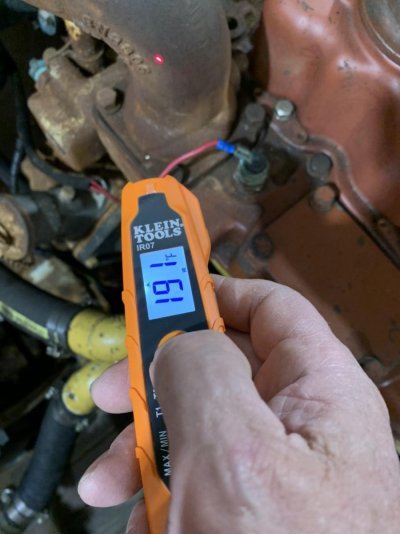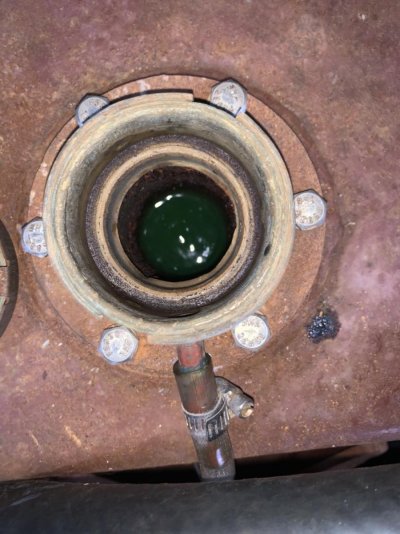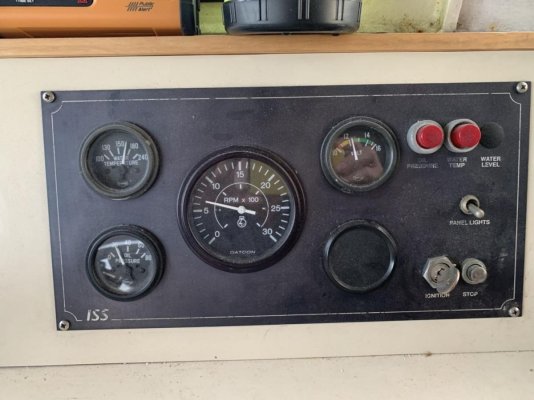Here is my test run I did tonight. It was about 2 hours long.
The results:
7.55 p.m.
Coolant tank cap off, in Neutral, engine starts, 700 rpm idle
8.10
Engine temp is 155F, gear in Neutral
8.20
Engine temp is 175, gear Neutral
8.25
Gear in reverse, 700 rpm
8.40
Gear in reverse, 700 rpm, engine temp 185 on gauge, alarm comes on
8.41
alarm switch disconnected
8.50
Gear in reverse, 700 rpm, engine temp 180 on gauge, no alarm
8.58
Coolant temp checked 150F at tank, gauge temp 180
Some small bubbles, coolant level only moves up and down an inch, but never reaches the overflow, cap is put back on at tank
9.10
Coolant temp 157, pipe at the alarm switch 215, gauge 180
9.16
Gear back to Neutral
9.25
Coolant temp 160
9.26
Running engine in neutral at 1000 rpm, gauge 180
9.35
Running engine in neutral at 1200 rpm, gauge 180
Pipe temp 217
9.40
Coolant temp 167, gauge 180
9.41
Running engine in neutral at 1500 rpm
9.46
Checking coolant, removing cap, coolant blows out bubbling, flows all over the tank,
Gauge 200F
9.47
Engine down to 700 rpm to cool
9.55
Engine off, coolant cap removed, only tiny bubbles no blow out,
Coolant pipe 225F, gauge 200F
10.00
Engine started, 700 rpm, gauge 180F
10.02
Engine off.
It seems that the cooling can handle low rpm, even in gear. I am on the buoy, so I cannot increase the rpm in gear. Only idle in reverse.
Understand that running a diesel in neutral at high rpm is not ideal, but there is no other way to test the cooling, unless I go out. I am afraid to risk any sailing, if the engine overheats again at higher rpm, while underway.
The other thing what puzzles me that the coolant temp was rising slowly, but never boiled. When the engine was running at 1500 rpm and I removed the cap, the coolant blew out. Was there an air mass, which reached the boiling point and wanted to come out?
Perhaps, I need to do this test again to see, if that was the case, or just the engine overheats at higher rpm?
It seems that the alarm switch is giving false signals to the PH. I will order a replacement. The PH gauge was always lower than what I could measure at the coolant pipe.
Don’t hesitate to give me your opinion. Thanks.






